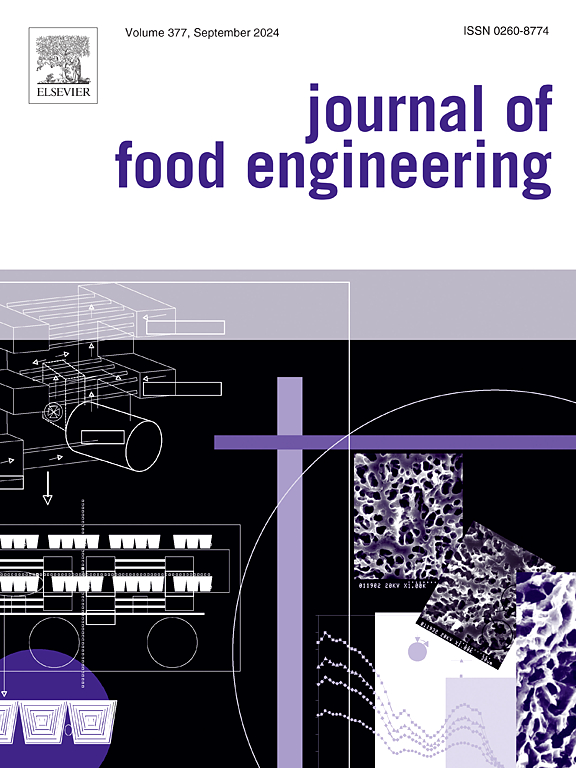利用声学振动信号对闭壳牡蛎新鲜度进行无损检测
IF 5.3
2区 农林科学
Q1 ENGINEERING, CHEMICAL
引用次数: 0
摘要
本研究提出了一种将声学振动技术与机器学习(ML)相结合的创新方法来无损评估闭壳牡蛎的新鲜度。内部开发的声学振动系统收集振动信号,然后通过融合策略进行处理,该策略基于改进的MFCC,集成了两个时域特征、六个频域特征和一个时频域特征。利用这些融合特征,采用堆叠集成学习算法对六种主流机器学习分类算法进行整合,利用它们在信号分析方面的优势,构建高性能的新鲜度检测模型。交叉验证评估显示模型的准确率为98%,突出了多特征融合和集成学习算法如何显着提高检测精度。对比研究进一步表明,与单独使用特定领域特征相比,融合特征显著提高了分类精度。实验结果表明,该方法成功地解决了牡蛎壳内部检测的难题,实现了牡蛎新鲜度的动态衰减检测。这为牡蛎等贝类产品的质量控制提供了一种新的技术途径,对提高食品安全和质量有重要意义。本文章由计算机程序翻译,如有差异,请以英文原文为准。

NDT of closed-shell oyster freshness by acoustic vibration signals
This study introduces an innovative method combining acoustic vibration technology with machine learning (ML) to non-destructively assess the freshness of closed-shell oysters. An acoustic vibration system, developed in-house, gathers vibration signals, which are then processed through a fusion strategy that integrates two time-domain features, six frequency-domain features, and one time-frequency domain feature based on an improved MFCC. Utilizing these fused features, the Stacking ensemble learning algorithm was employed to integrate six mainstream machine learning classification algorithms, leveraging their strengths in signal analysis to build a high-performance freshness detection model. Cross-validation assessments reveal the model's accuracy at 98%, highlighting how multi-feature fusion and ensemble learning algorithms significantly improve detection precision. Comparative studies further demonstrate that fusion features notably enhance classification accuracy over using domain-specific features alone. The experimental results indicate that the proposed method successfully navigates the challenge posed by the oyster shell to internal detection, achieving dynamic decay detection of oyster freshness. This provides a new technological approach for quality control in shellfish products like oysters, contributing meaningfully to food safety and quality enhancement.
求助全文
通过发布文献求助,成功后即可免费获取论文全文。
去求助
来源期刊

Journal of Food Engineering
工程技术-工程:化工
CiteScore
11.80
自引率
5.50%
发文量
275
审稿时长
24 days
期刊介绍:
The journal publishes original research and review papers on any subject at the interface between food and engineering, particularly those of relevance to industry, including:
Engineering properties of foods, food physics and physical chemistry; processing, measurement, control, packaging, storage and distribution; engineering aspects of the design and production of novel foods and of food service and catering; design and operation of food processes, plant and equipment; economics of food engineering, including the economics of alternative processes.
Accounts of food engineering achievements are of particular value.
 求助内容:
求助内容: 应助结果提醒方式:
应助结果提醒方式:


